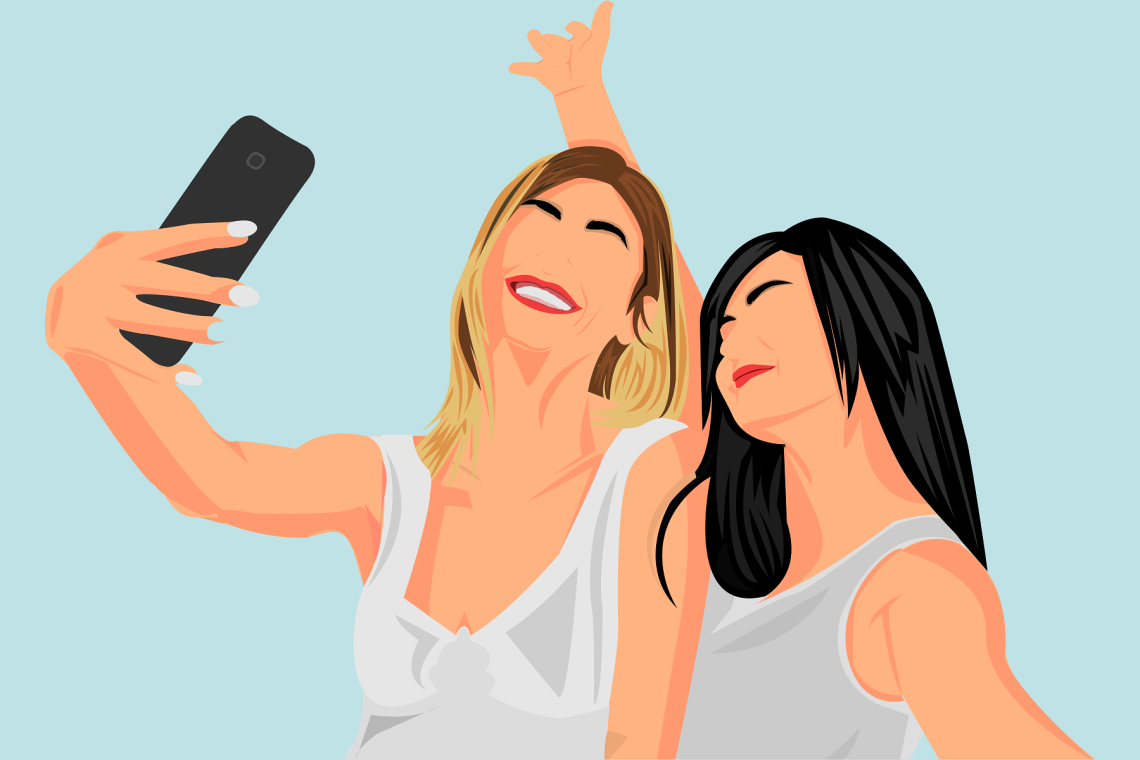How healthy is the selfie?
By Dr. Colin Michie
Relentless and rapid advances in digital phone technologies have not changed the biology and designs of our brains. However, hospital admissions from many countries suggest they may make some people ill.
From birth, we watch faces. Babies can distinguish their mother’s face in their first hours; they learn communication and language from visual face-time. “Who is that in the mirror?” is a question we answer to ourselves as toddlers, watching our own faces, forming early “ideas of me”. Self-esteem develops by eight years. Puberty builds on these foundations as we grow physically, engaging and adapting our learning, emotions and skills within our environments. We soak up information, particularly from watching and communicating with others – faces remain central to this.
Digital social media has dramatically amplified our interest in our own faces, along with that desire to promote ourselves. Artists have always painted self-portraits; early cameras were adapted to make photographic self-images, but these were used by small numbers of artists for limited audiences, without invited feedback. Smartphones and the internet supercharged this process with selfie technologies. Selfies empower all of us, young people in particular, to share faces – our images – with many others. Unlike those early paintings or photographs, selfies come with metadata – layers of embedded information, including dates and geotags. Once shared on a media platform, the artifices of audience followings and even likes may become part of a selfie.
In 2013, the term selfie was recorded in the Oxford English Dictionary – 2014 was the “Year of the Selfie”. Some 10 years later and counting, over 90 million selfies are shared daily. Such global levels of sharing and being able to view so many faces promote positive connectivity, self-expression, validation, engagement. Whereas a fifteenth century portrait was probably a reasonably accurate representation of the sitter, today’s filters and special effects encourage image “processing” to flatter, to enhance facial “beauty” particularly, and so, ultimately, self-importance. Unlike those staid early self-portraits, today more subjects tend to smile in their images (perhaps this reflects better dental health).
Sharing one’s facial image on these unimaginably large, rapidly shifting social media platforms can have side effects on the health of some. Racy, techno-chasing narcissistic pursuits such as hours of selfie-sharing with followers often come at the expense of sleep and an interruption of any reasonable social and family life. For those attending education, reading and homework are often sacrificed. Some have lost their lives taking selfies, as photographing oneself at a point of obvious danger may be risky! Selfie obsessions or “selfitis” can overtake real life, as with any addiction. The novel sociometers of digital media, backed by algorithms that deliver personalised temptations also have strong grip of your time. As a result, they can challenge our emotional and mental health with disappointments, new social pressures and those haunting fears of “missing out”. Sadness, hopelessness and thoughts of suicide have been identified in many surveys of young people linked to their social media use. This is powerful and concerning. Because they share selfies more frequently, young women have greater vulnerabilities. They are more often harassed, bullied and predated online.
Young people routinely use digital tools in their education – some of these on smartphones. Some adults accumulate many hours of screen time at work. Time spent on selfies and social media deliver additional burdens. Those using digital media for more than six hours a day have been shown to run greater risks of poor general health, neck and shoulder pains, difficulty sleeping and low mood, as well as anxiety. Studies of users of social media accounts found highest risks of anxiety or depression among young people with public accounts. Regular use of photo-manipulating filters is a further aspect of facial fakery that relates to increased rates of eating disorders, whatever your age or sex. Given these broad and often hidden concerns, perhaps social media should be ranked as a health hazard, alongside tobacco or fast food.
For young people, parental monitoring of their social media use reduces the likelihood of addiction, psychological distress and mental health damage relating to body image and low self-esteem. Measures of digital health and social media addiction give practical guidance, too – families work better together when improving digital literacy. Limiting smartphone access in schools has become a crucial tool to improving concentration, face-to-face socialisation and engagement. If we are to live our best lives, sleep and dream well, we need time to wonder at the faces around us, as well as the natural outdoor beauty surrounding us on this island. Awe, enchantment and joy are rarely expressed in selfies, but we can find all three daily in social encounters. Selfies should come with a health warning about their links with anxieties, the likes of which never washed up on our beaches before.
Dr. Colin Michie specializes in paediatrics, nutrition, and immunology. Michie has worked in the UK, southern Africa and Gaza as a paediatrician and educator and was the associate Academic Dean for the American University of the Caribbean Medical School in Sint Maarten a few years ago.
Useful resources: www.nhs.uk/mental-health/self-help/tips-and-support/raise-low-self-esteem







